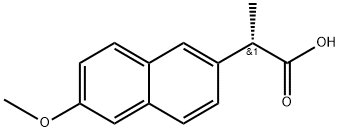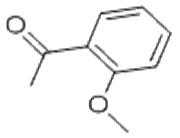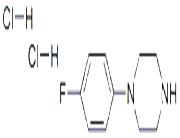| Non-steroidal anti-inflammatory drugs |
Naproxen is a non-steroidal anti-inflammatory drug ,it is a PG synthase inhibitor, which can inhibit prostaglandin synthetase, it has significant analgesic and antipyretic effects, oral absorption is rapid and complete, 2 to 4 hours after a dose ,plasma concentration reaches the peak, in the blood , more than 99% is bound to plasma proteins, t1/2 is 13 to 14 hours, about 95% is discharged from the urine with the prototype and metabolites.it is clinically used For the treatment of rheumatic and rheumatoid arthritis , osteoarthritis, ankylosing spondylitis, gout, arthritis, tenosynovitis.it can also be used to alleviate pain caused by musculoskeletal sprains, contusions,damages and dysmenorrhea . But it should be noted that like other non-steroidal anti-inflammatory drugs, the same serious gastrointestinal adverse reactions could occur at any time while taking naproxen during treatment, so the active gastroduodenal ulcer patients are hanged, other gastrointestinal tract disease patients should take this drug under close medical supervision.
The above information is edited by the Chemicalbook of Tian Ye. |
| Chemical Properties |
White crystal or crystalline powder. Melting point 155.3 ℃. Soluble in acetone, soluble in methanol, ethanol, acetic acid, insoluble in benzene, practically insoluble in water. In case of light,it is color-graded, odorless, tasteless. |
| Uses |
It is a non-steroidal anti-inflammatory drug for the relief of fever and inflammation and pain associated with arthritis or other symptoms , it has anti-inflammatory, antipyretic and analgesic effects. Naproxen plays a role by inhibiting the cyclooxygenase, which generates prostaglandin and is one kind of enzymes related to inflammatory mediators . It is recommended to take the drug during meals to reduce stomach irritation. |
| Used in Particular Diseases |
Acute Gouty Arthritis:
Dosage and Frequency: 500 mg twice daily for 3 days, then 250–500 mg daily for 4–7 days |
| production method |
by methylation, acetylation With 2-naphthol , 6-methoxy-2-acetonaphthone is produced, then it is condensed with acid ester, then generate the product through isomerization, hydrolysis, oxidation, and split and other reactions. |
| Category |
Toxic substances |
| Toxicity grading |
Highly toxic |
| Acute toxicity |
Oral-rat LD50 248 mg/kg; Oral-Mouse LD50: 360 mg/kg |
| Flammability and hazard characteristics |
Combustible; combustion produces toxic and acrid smoke. |
| Storage Characteristics |
Ventilated, low-temperature ,dry storeroom, it should be stored and transported from food raw materials separately. |
| Extinguishing agent |
Water, dry powder, foam,sand |
| Chemical Properties |
white to light yellow crystal powde |
| Uses |
An anti-inflammatory, analgesic, antipyretic. A non-steroidal anti-inflammatory |
| Definition |
ChEBI: A methoxynaphthalene that is 2-methoxynaphthalene substituted by a carboxy ethyl group at position 6. Naproxen is a non-steroidal anti-inflammatory drug commonly used for the reduction of pain, fever, inflammation and stiffness caused by conditions such a osteoarthritis, kidney stones, rheumatoid arthritis, psoriatic arthritis, gout, ankylosing spondylitis, menstrual cramps, tendinitis, bursitis, and for the treatment of primary dysmenorrhea. It works by inhibiting both the COX-1 and COX-2 enzymes. |

 China
China








